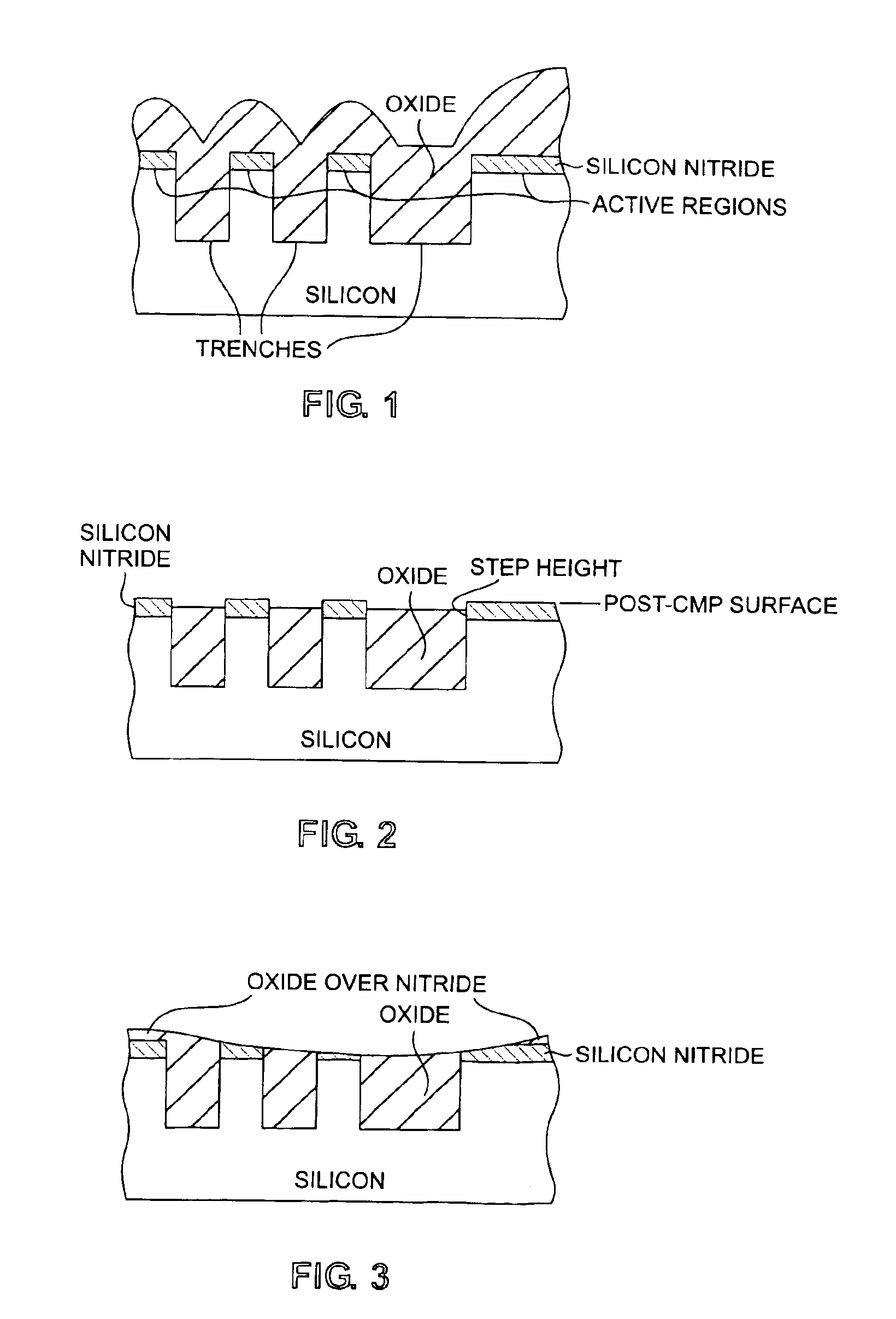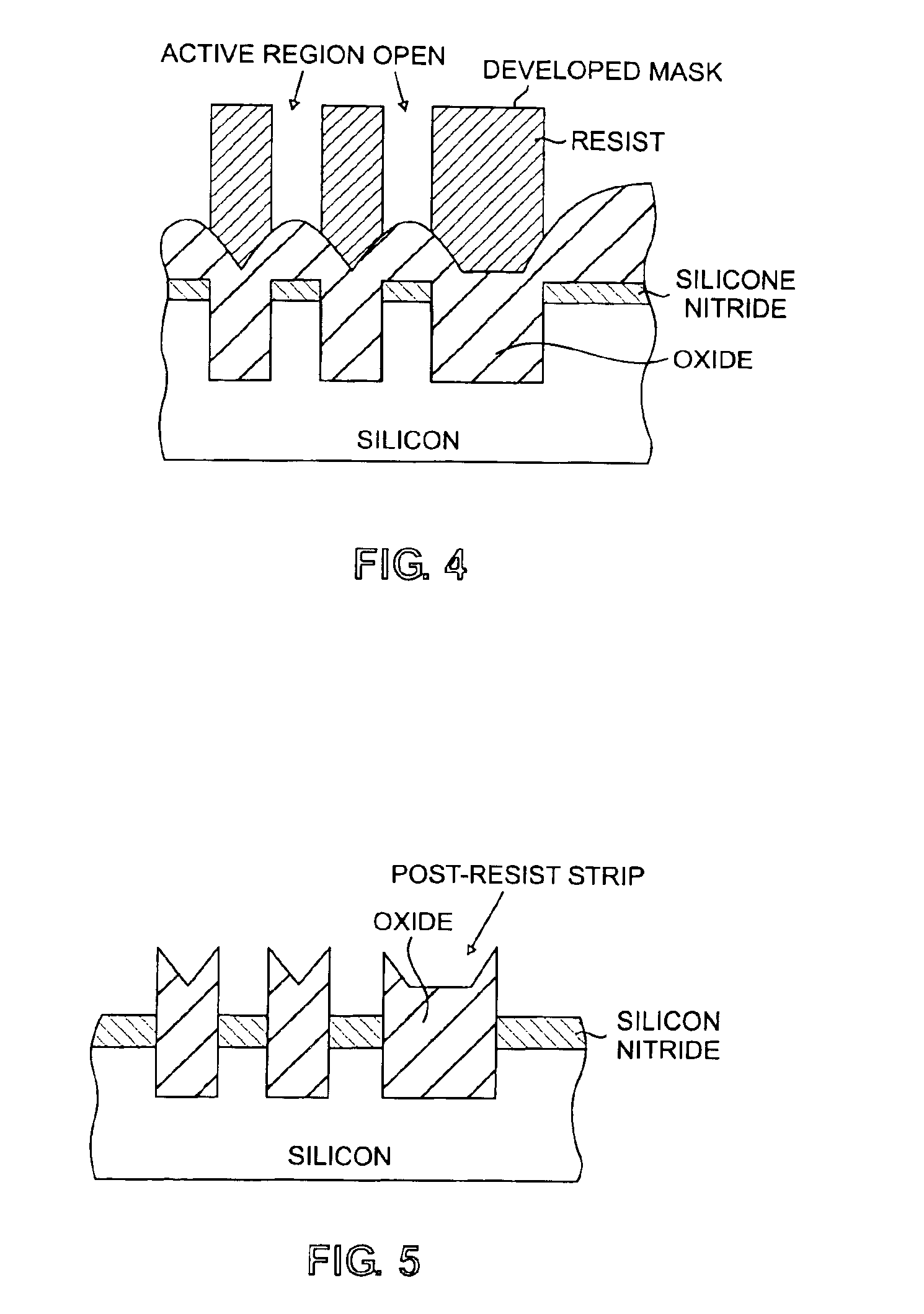Method for improving planarity of shallow trench isolation using multiple simultaneous tiling systems
a technology of tiling system and shallow trench, which is applied in the direction of semiconductor devices, semiconductor/solid-state device details, electrical apparatus, etc., can solve the problems of inability to remove nitride, lack of planarity at this stage, and uneven cmp mechanism, etc., and achieve superior topography results
- Summary
- Abstract
- Description
- Claims
- Application Information
AI Technical Summary
Benefits of technology
Problems solved by technology
Method used
Image
Examples
example 1
[0074]Referring again to FIG. 11, the tiling algorithm has identified a place 49 in the layout where the long-range (zone 45) tiles have been situated in close (i.e., 1 um) proximity to the nearby circuit features 41. Iterating, the model determines after all that circuit features 41 along the place 49 need some close-in (zone 43) tiling (not shown). Accordingly an array of short-range tiles are provided in the place 49, that is, substituted for the long-range zone 45 tiles.
[0075]For this feature array, however, the tiling algorithm then detects that even with short-range tiles thus positioned in place 49, there is still a risk that without more tiling treatment, CMP will cause dishing and erosion. Therefore, some of the short-range (zone 43) tiles positioned at place 49 are replaced with medium-range (zone 44) tiles.
[0076]Elsewhere for this feature array, in place 49, the exclusion area 42 is extensive around the local circuit features 41, and running of the algorithm determines th...
PUM
 Login to View More
Login to View More Abstract
Description
Claims
Application Information
 Login to View More
Login to View More - R&D
- Intellectual Property
- Life Sciences
- Materials
- Tech Scout
- Unparalleled Data Quality
- Higher Quality Content
- 60% Fewer Hallucinations
Browse by: Latest US Patents, China's latest patents, Technical Efficacy Thesaurus, Application Domain, Technology Topic, Popular Technical Reports.
© 2025 PatSnap. All rights reserved.Legal|Privacy policy|Modern Slavery Act Transparency Statement|Sitemap|About US| Contact US: help@patsnap.com



